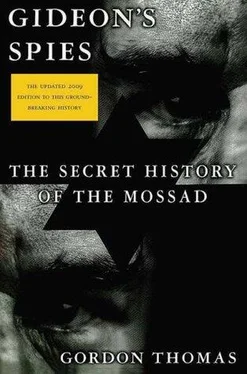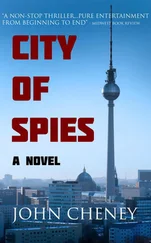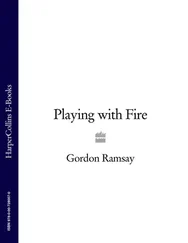Gordon Thomas - Gideon's Spies
Здесь есть возможность читать онлайн «Gordon Thomas - Gideon's Spies» весь текст электронной книги совершенно бесплатно (целиком полную версию без сокращений). В некоторых случаях можно слушать аудио, скачать через торрент в формате fb2 и присутствует краткое содержание. Город: New York, Год выпуска: 2009, ISBN: 2009, Издательство: Thomas Dunne Books, Жанр: История, на английском языке. Описание произведения, (предисловие) а так же отзывы посетителей доступны на портале библиотеки ЛибКат.
- Название:Gideon's Spies
- Автор:
- Издательство:Thomas Dunne Books
- Жанр:
- Год:2009
- Город:New York
- ISBN:978-0-312-53901-6
- Рейтинг книги:4 / 5. Голосов: 1
-
Избранное:Добавить в избранное
- Отзывы:
-
Ваша оценка:
- 80
- 1
- 2
- 3
- 4
- 5
Gideon's Spies: краткое содержание, описание и аннотация
Предлагаем к чтению аннотацию, описание, краткое содержание или предисловие (зависит от того, что написал сам автор книги «Gideon's Spies»). Если вы не нашли необходимую информацию о книге — напишите в комментариях, мы постараемся отыскать её.
Gideon’s Spies
Gideon's Spies — читать онлайн бесплатно полную книгу (весь текст) целиком
Ниже представлен текст книги, разбитый по страницам. Система сохранения места последней прочитанной страницы, позволяет с удобством читать онлайн бесплатно книгу «Gideon's Spies», без необходимости каждый раз заново искать на чём Вы остановились. Поставьте закладку, и сможете в любой момент перейти на страницу, на которой закончили чтение.
Интервал:
Закладка:
Tel Aviv saw the real danger from a Saudi-Pakistan pact was that the House of Saud could be tempted to try and buy peace for itself by providing al-Qaeda with nuclear weapons.
The katsa had one final piece of information. The Salesman had identified the six Pakistani nuclear scientists who had vanished after being named in the America Hiroshima documents from photographs Mossad had obtained and had shown him.
It was then that the scientists had moved from Mossad’s Detain List to the separate and very secret one it kept for those it was tasked to assassinate.
Rules for an assassination had not changed. Each execution had to be approved by a committee chaired by the incumbent prime minister and was of a person, the evidence showed, who posed a clear and present danger to the state of Israel and who could not be brought to trial because he or she was protected within the borders of one of Israel’s enemies. Among them were Saudi Arabia, North Korea, Iran, and the numerous Islamic republics of the former Soviet Bloc. In Mossad’s eye view, the need for kidon had increased with the spread of Islamic fundamentalism in all its guises: Hamas, Hezbollah, Islamic Jihad, Solidarity Front, Palestinian Liberation Front, the terrorists of the Philippines; all were pledged to destroy the Jewish State. The kidon had killed in all those places, employing the many skills acquired through their extensive training under the precise guidelines they had learned and that had remained in force since Meir Amit, the most innovative and ruthless director general of Mossad before Meir Dagan had taken over, had written out the rules in his bold handwriting: “There will be no killing of heads of state however extreme they are. They will be dealt with politically. There will be no killing of a terrorist’s family unless they are also proven to be implicated in terrorism. Each execution must be legally sanctioned by the prime minister of the day. It is therefore the ultimate judicial sanction of the state and the executioner is no different from a legally appointed hangman or any other lawfully appointed executioner of the state.”
Part of what Amit once likened to a “theology of death” (to the author) is based on an eighty-page manual written in 1953 by a scientist, Dr. Sidney Gottlieb, who at the time was head of the CIA’s Technical Services Division. The manual has remained to this day in the midrasa, the Mossad training school, and is used as part of the two-year course for its agents. From them came the kidon. Rafi Eitan, a former Mossad operation chief, told the author, “Only a handful show the requirements; a total coldness once committed, and afterwards no regrets.”
Those requirements were imbued in the team who had begun to devise ways to assassinate the six Pakistani scientists the State of Israel had decided must die. Kidon assembled profiles of the scientists with the help of the Asia Desk, with information from The Salesman provided to Moshe Feinstein, from Jamal’s informers in Pakistan and elsewhere. Ari Ben-Menashe articulated to the author: “They were getting to know their targets; background, family, and friends, any connection that could be useful. How they reacted in a situation; what pushes their buttons. Only then could an operational plan be constructed. They would study every inch of the country where they worked, its geography and climate. They would study videotapes, travel brochures, local newspapers. Their methodology was anchored in their well-honed ability to separate fact from conjecture and the plans they created were governed by the golden rule that facts could not always wait for certainty.”
Late in October 2005, The Salesman gave Moshe Feinstein the news that the six scientists had flown from Riyadh to Tehran, a week after North Korea had delivered liquid propellant to power Iran’s Shahab-3 rocket with its range of eight hundred miles and a capability of delivering a warhead that would obliterate Tel Aviv. On Tuesday, October 25, Iran’s president Mahmoud Ahmadinejad addressed a Tehran conference called “The World Without Zionism.” It was the last week of Ramadan, the time of prayer. Five months before, he had replaced a reformist president, Mohammad Khatami, who had advocated international dialogue and improving Iran’s relationship with the West. With words reminiscent of Hitler, Ahmadinejad said, “Israel and the Jews must be wiped off the map. Anybody who recognizes Israel will burn in the fire of the Islamic nation’s fury.”
In the kirya Israel’s three nuclear submarines and their arsenal of missiles with nuclear warheads were brought to a level one stage below launch as they kept silent watch on the seabed in the Strait of Hormuz opposite the Iranian Coast.
On November 2, 2005, a Mossad-inspired operation was moving to a climax in the Indonesian tropical city of Batu. A month had passed since a katsa in Delhi, the Indian capital, had learned that Azhari Husin, al-Qaeda’s most experienced bomb maker, who had already been identified by Mossad as the mastermind behind the July bombers in London, had been in Delhi shortly before bombs had ripped through the city’s Pahargani District. The attack was later earmarked as the work of an al-Qaeda group in Kashmir, Lashkar-e-Toiba, or Soldiers of Fortune. Over sixty people had died and over a hundred were seriously injured. Mossad’s offer to help Indian intelligence track Husin was swiftly accepted.
For three weeks the search yielded no trace of one of the world’s most wanted terrorists. Then a sayanim on East Java, part of the Indonesian archipelago, told his katsa controller that a number of men had rented a house in a suburb of Batu, and two of them bore a resemblance to newspaper photographs of the terrorists suspected of being behind the previous month’s attack on a restaurant in Bali in which twenty-three people had died. Within hours the katsa arrived in Batu. The newspaper photographs were of Azhari Husin and the leader of another militant group, Jamaah Islamiah, called Noordin Mohammed Top, a ruthless killer cast from the same pitiless mold as Musab al-Zarqawi in Iraq. The sayanim reported that Top had left Batu the previous evening.
Working through a well-established rule that ensured Mossad’s presence remained unknown, the katsa informed his station chief at the Israeli Embassy in Dehli. The Indian Foreign Ministry was told. From there a call went to its counterpart in Jakarta, the Indonesian capital. Within an hour of the first call, a full-scale operation was underway in Batu. Led by Indonesia’s elite antiterrorist unit, snipers were posted on neighboring roofs and a pitched battle began. From within the house, hand grenades were hurled and gunfire raked the street as the unit stormed the house. As they entered, Husin reached for the detonator on the explosive belt he was wearing, but was stopped from doing so when a police officer shot him in the chest and legs. But there was no time to stop another terrorist from detonating his own belt. The blast knocked the roof off the house. Azhari Husin ended his life like most of his victims, amid the devastation of a suicide bombing.
The bomb maker had been high on the list of terrorists to be “rendered” by the CIA Counterterrorist Intelligence Centers (CTIC) at Langley. Originally created in the mid-1990s by the Clinton administration, it had rapidly expanded after the 9/11 attacks to counter the threat of Islamic terrorism and overcome CIA difficulties in obtaining convictions against terrorists. Further expansion followed the end of the war with Iraq when a number of meetings took place in London and Washington, chaired by both countries’ intelligence chiefs, to decide how to best deal with the large number of captured suspected terrorists. Mossad had a seat at the table. Out of those meetings came the creation of a purpose-built interrogation center at the U.S. base at Bagram in the charge of forty CTIC men and women, including doctors trained in the use of psychotropic drugs. Many were familiar with the use of mind-bending chemicals that had been developed for the notorious CIA MK-ULTRA program in the 1960s. Mossad’s own interrogators were given full access to the captives. Intelligence they acquired was shared with CTIC.
Читать дальшеИнтервал:
Закладка:
Похожие книги на «Gideon's Spies»
Представляем Вашему вниманию похожие книги на «Gideon's Spies» списком для выбора. Мы отобрали схожую по названию и смыслу литературу в надежде предоставить читателям больше вариантов отыскать новые, интересные, ещё непрочитанные произведения.
Обсуждение, отзывы о книге «Gideon's Spies» и просто собственные мнения читателей. Оставьте ваши комментарии, напишите, что Вы думаете о произведении, его смысле или главных героях. Укажите что конкретно понравилось, а что нет, и почему Вы так считаете.












